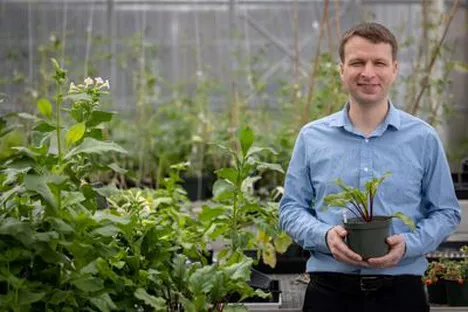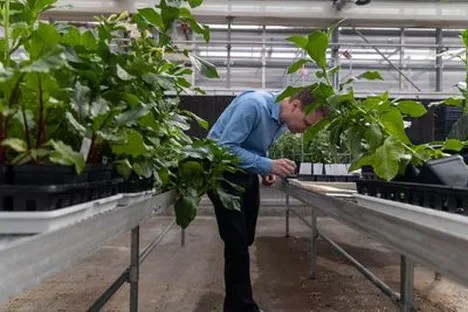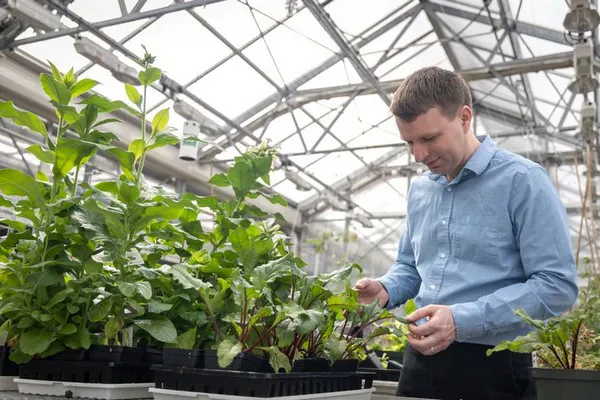One West Virginia University researcher's work to discover fundamental botanical knowledge could have practical applications in American agriculture and usher in a post-petrochemical-laden society.

Joseph Lynch, assistant professor of biochemistry at the Davis College of Agriculture, Natural Resources and Design, will study an enzyme that could increase the production of amino acids, thereby increasing the nutritional value of a plant as well as its color composition for non-nutritive uses. This research was selected for a $650,000 grant from the Agriculture and Food Research Initiative Foundational Knowledge of Plant Products program, which is implemented by the National Institute of Food and Agriculture.
"I'm surprised how much is still unknown when it comes to amino acids," Lynch said. "There is a lot that remains to be discovered, and I'm working to fill those knowledge gaps."
To do that, Lynch is studying multiple versions of the enzyme responsible for shikimate compound production. The shikimate compound itself is needed for the production of aromatic amino acids, which help create multiple compounds within a plant that affect growth and nutrition.
To produce more fruit and more products made from the plants, a larger supply of amino acids is required. To create more amino acids, the production of shikimate would need to be influenced directly.
One version of this enzyme that makes the shikimate compound is found in all plants. The other version is uncommon, and its role is so far unknown.

Tomatoes are one of the few plants that have both versions of the enzyme and are easy to work with. If Lynch's research is successful, it would have far-reaching agricultural and economic impacts.
"I wanted to use a plant that is likely to have a direct impact on American agriculture," Lynch said.
Tomatoes are widely consumed. The United States Department of Agriculture estimates the annual consumption of fresh tomatoes to be 20 pounds per capita, and processed tomato product consumption is 70 pounds per capita annually. By choosing tomatoes, the hope is the information can be directly applied to improving tomato production.
Beets, on the other hand, are not a staple root vegetable in American agriculture; however, Lynch included them in his research because of the unique, intense red color. The Caryophyllales family are the only plants to have betalains, the color-producing compounds in beets. In addition to having those rare compounds, beets have their own unique version of the shikimate enzyme.
"I suspect that the rare version of the enzyme in beets is somehow uniquely valuable in making amino acids that affect pigmentation," Lynch said.
To alter the characteristics of a tomato or beet, the plant cells would need to better use limited resources (like the enzyme) to make the shikimate compound. This could increase anthocyanins that affect pigment in some plants; tannins, which changes the taste of a plant; or lignin, a structural component in plants. The eventual goal is to tailor fruit and vegetable production to specific needs—like making a more palatable or nutritionally enhanced food.

Aside from improving diet, genetically modified tomatoes, also called designer tomatoes, could have valuable chemical uses. There is industrial potential in many of the shikimate pathway-derived compounds to be used as lubricants, plastic alternatives, and fuels, creating sustainable production of petrochemical replacements.
Lynch's research is an initial step toward that future. Once his research is complete, he plans to fill in the next knowledge gap related to amino acids.
"Some of the information that comes from this project is going to create more questions than it answers," Lynch said. "That's what's appealing about research to me—figuring out those new questions and how to answer them."
Source: davis.wvu.edu
